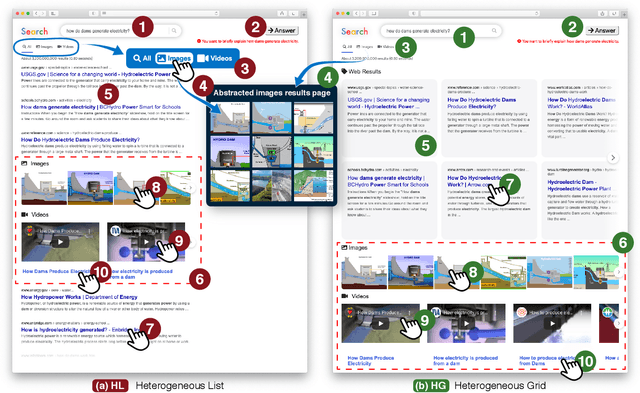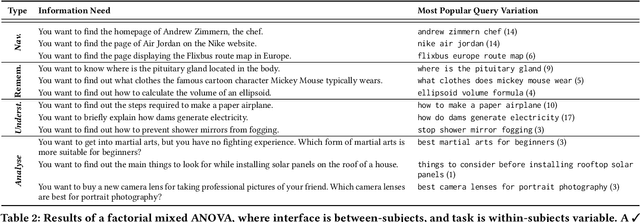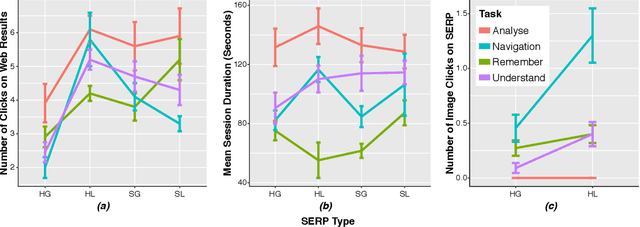Users and Contemporary SERPs: A (Re-)Investigation Examining User Interactions and Experiences
Paper and Code
Jul 26, 2022



The Search Engine Results Page (SERP) has evolved significantly over the last two decades, moving away from the simple ten blue links paradigm to considerably more complex presentations that contain results from multiple verticals and granularities of textual information. Prior works have investigated how user interactions on the SERP are influenced by the presence or absence of heterogeneous content (e.g., images, videos, or news content), the layout of the SERP (list vs. grid layout), and task complexity. In this paper, we reproduce the user studies conducted in prior works-specifically those of Arguello et al. [4] and Siu and Chaparro [29]-to explore to what extent the findings from research conducted five to ten years ago still hold today as the average web user has become accustomed to SERPs with ever-increasing presentational complexity. To this end, we designed and ran a user study with four different SERP interfaces: (i) a heterogeneous grid; (ii) a heterogeneous list; (iii) a simple grid; and (iv) a simple list. We collected the interactions of 41 study participants over 12 search tasks for our analyses. We observed that SERP types and task complexity affect user interactions with search results. We also find evidence to support most (6 out of 8) observations from [4 , 29] indicating that user interactions with different interfaces and to solve tasks of different complexity have remained mostly similar over time.
 Add to Chrome
Add to Chrome Add to Firefox
Add to Firefox Add to Edge
Add to Edge